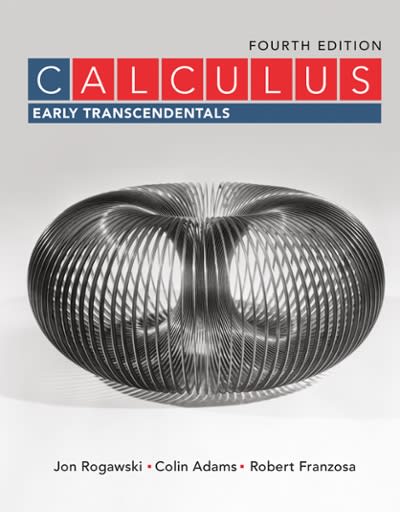Question
The rapid growth of video game popularity has generated concern among practitioners, parents, scholars and politicians, wrote researchers Hope M. Cummings and Elizabeth A. Vandewater.
"The rapid growth of video game popularity has generated concern among practitioners, parents, scholars and politicians," wrote researchers Hope M. Cummings and Elizabeth A. Vandewater. "Particularly during adolescence, when social interactions and academic success lay the groundwork for health in adulthood, there is concern that video games will interfere with the development of skills needed to make a successful transition to adulthood." [Source: Cummings, H., & Vandewater, E. (2007). Relation of adolescent video game play to time spent in other activities. Archives of Pediatrics & Adolescent Medicine, 161(7), 684-689.]
Cummings and Vandewater measured the time adolescents spent playing video games and the time they spent doing other activities, such as interacting with family and friends, reading or doing homework, or playing sports.
Suppose you decide to conduct a similar study among a random sample of 102 teenage girls who play video games. You want to determine whether the amount of time girls spend playing video games is positively correlated with the amount of time they watch television, so you ask the girls to keep a log of their activities over a week's time.
1. Let denote the population Pearson correlation coefficient between the amount of time girls spend playing video games and the amount of time they watch television. What is your null hypothesis? What is your alternative hypothesis? Is it negative or positive tailed test?
The population Pearson correlation coefficient between the amount of time girls spend playing video games and the time they watch television in your sample is r = 0.44.
2. What is the test statistic for your hypothesis test?
3. What is the degrees of freedom for your hypothesis test?
4. At a significance level of = 0.01, the critical value(s) for your hypothesis test is (are) ___?
5. Given your conclusion, what is the most appropriate interpretation of your result?
a. The more time girls spend playing video games, the more time they spend watching television.
b. Playing video games makes girls want to watch more television.
c. This study found no linear relationship between the time girls spend playing video games and time spent watching television.
d. The more time girls spend playing video games, the less time they spend watching television.
Step by Step Solution
There are 3 Steps involved in it
Step: 1

Get Instant Access to Expert-Tailored Solutions
See step-by-step solutions with expert insights and AI powered tools for academic success
Step: 2

Step: 3

Ace Your Homework with AI
Get the answers you need in no time with our AI-driven, step-by-step assistance
Get Started


